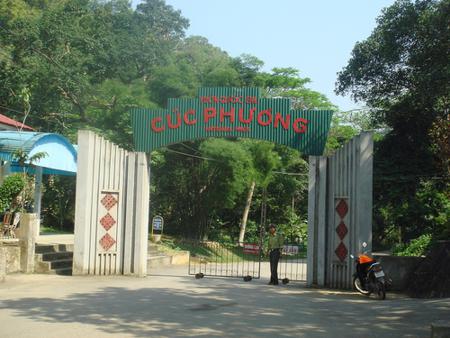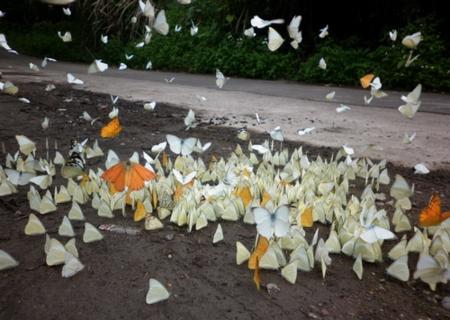Deeply lied in Tam Diep Mountain Range among three provinces Thanh Hoa, Hoa Binh and Ninh Binh, Cuc Phuong national park is a well-known and attractive eco-tourism site.
Established in 1962, it is the oldest national park in Vietnam Magnificent limestone mountains rise up majestically from the green rice-terraces and traditional stilt houses of the Muong hill-tribe. Covered in a dense forest they form a habitat for some of Asia’s rarest species. Cuc Phuong national park is no wonder that researchers, enthusiasts, naturalists and conservationists alike are drawn to this corner of the world.

The botanical richness of the forest is impressive as it supports a wide variety of flora species and patches of primeval forest, including ancient trees with thick clusters of roots, parasitic plants and ligneous creepers. Some tree species have been introduced from India, Borneo and Burma. Clusters of orchards grow near cave entrances, where the moisture conditions and light are ideal. Varieties include thousand-year dracontomelum and parashorea trees which can be visited in a one or two hour hiking, vanilla, coral, snow-white, and butterfly orchids everywhere. Large mammals inhabit the park including panthers and bears, but rarely appear, so the most popular animals you can see are monkeys, gibbons, flying squirrels and pheasants. There are also over 120 species of birds and many varieties of beetles living here, and April and May arrive swarms of butterflies. At night, million of cicadas create a deafening din, and million of fireflies flicker about.

Cuc Phuong supports populations of several mammal species of conservation importance, including the globally critically endangered Delacour’s Leaf Monkey Trachypithecus delacouri and the globally vulnerable Owston’s Civet Hemigalus owstoni. In addition, the nationally threatened Leopard Panthera pardus has been recently recorded at the national park. Furthermore, over 40 bat species have been recorded at the national park, including 17 species from a single cave. Unfortunately, several large mammal species, including Tiger Panthera tigris and White-cheeked Crested Gibbon Hylobates leucogenys, are believed to have become extinct at Cuc Phuong in recent times, mainly due to high hunting pressure and the relatively small size of the national park.
The forests of Cuc Phuong are immensely important culturally. They provide livelihood resources for local communities. However, the forests and the resources they provide to communities are under constant threat. Community-based ecotourism initiatives are beginning to turn marginalized communities into local stakeholders, creating incentives to support conservation.
Lying in a limestone area, Cuc Phuong includes numerous caves. At “Nguoi Xua” (Cave of Early Man), two ancient tombs have been discovered, along with Neolithic remains and evidence of stone implements; there have been similar finds at Trang Khuyet (Crescent Moon), Thanh Minh, and Con Mong Caves. Hang Dan Cave is known for its bat population. Hiking in Cuc Phuong is following some kilometers of trails and passing through old-growth forest with long vines wrapped around strangled trees, visiting the caves, waterfalls and streams in the forest or stopping over at a Muong ethnic village.

Cuc Phuong National Park is a popular tourist destination, and receives large numbers of visitors each year, mostly domestic tourists. Due to the large number of visitors, Cuc Phuong has high potential value for raising awareness of environmental issues among the general public. This potential has already been partly realized by, for example, the construction of a visitor centre at the national park, which opened in mid 2000.
Cuc Phuong has historical value as an archaeological site. Prehistoric human remains, up to 12,000 years old, have been found in caves in the national park. In addition, a fossilised marine reptile was recently found in the national park; this is the first discovery of its kind in Vietnam.
How to get there?
Take a bus from Hanoi at Giap Bat Bus Terminal- the city’s southern bus terminal, at around VND 70,000, to Nho Quan, then catch a motorcycle taxi (Xe om) to the park headquarters for about VND 30,000. It may take 150 to 210 minutes.
If you plan on making only a day trip to the park, you should go through a travel agency. However, if you’re going to stay for one or more nights then the public bus option is viable.
Source: vnppa.org.vn
